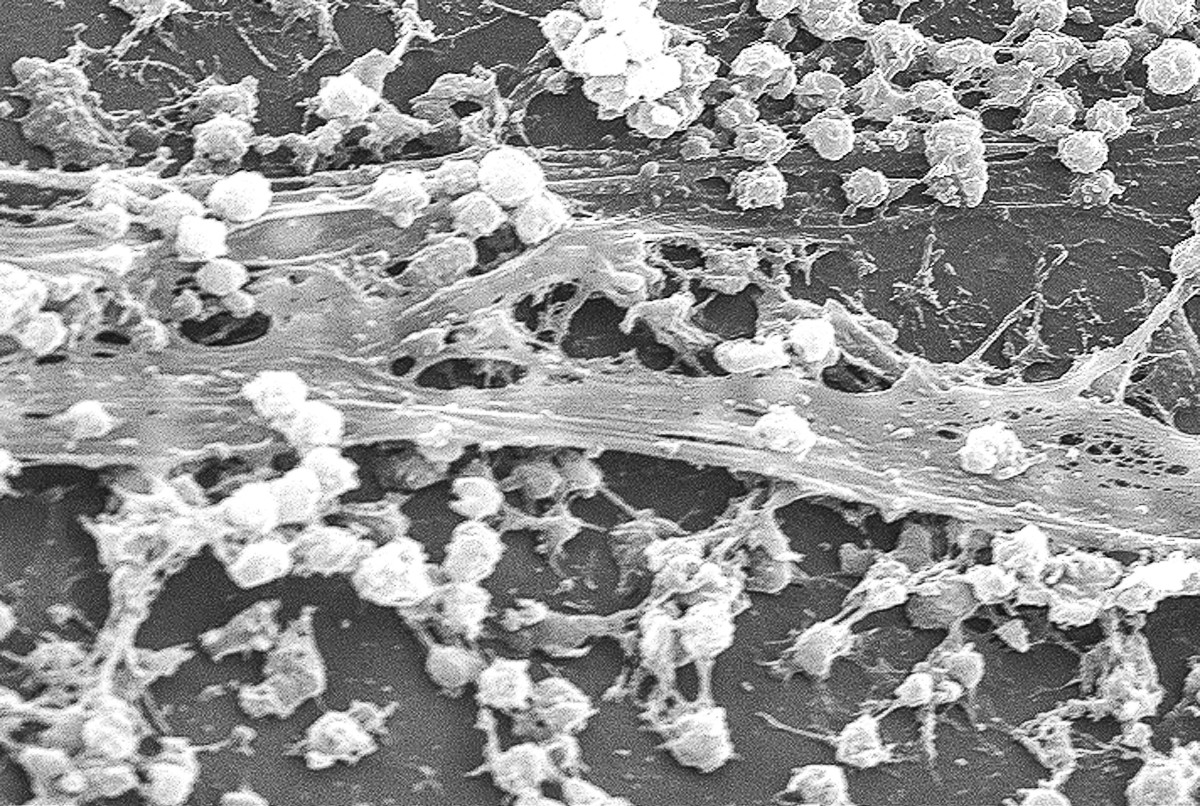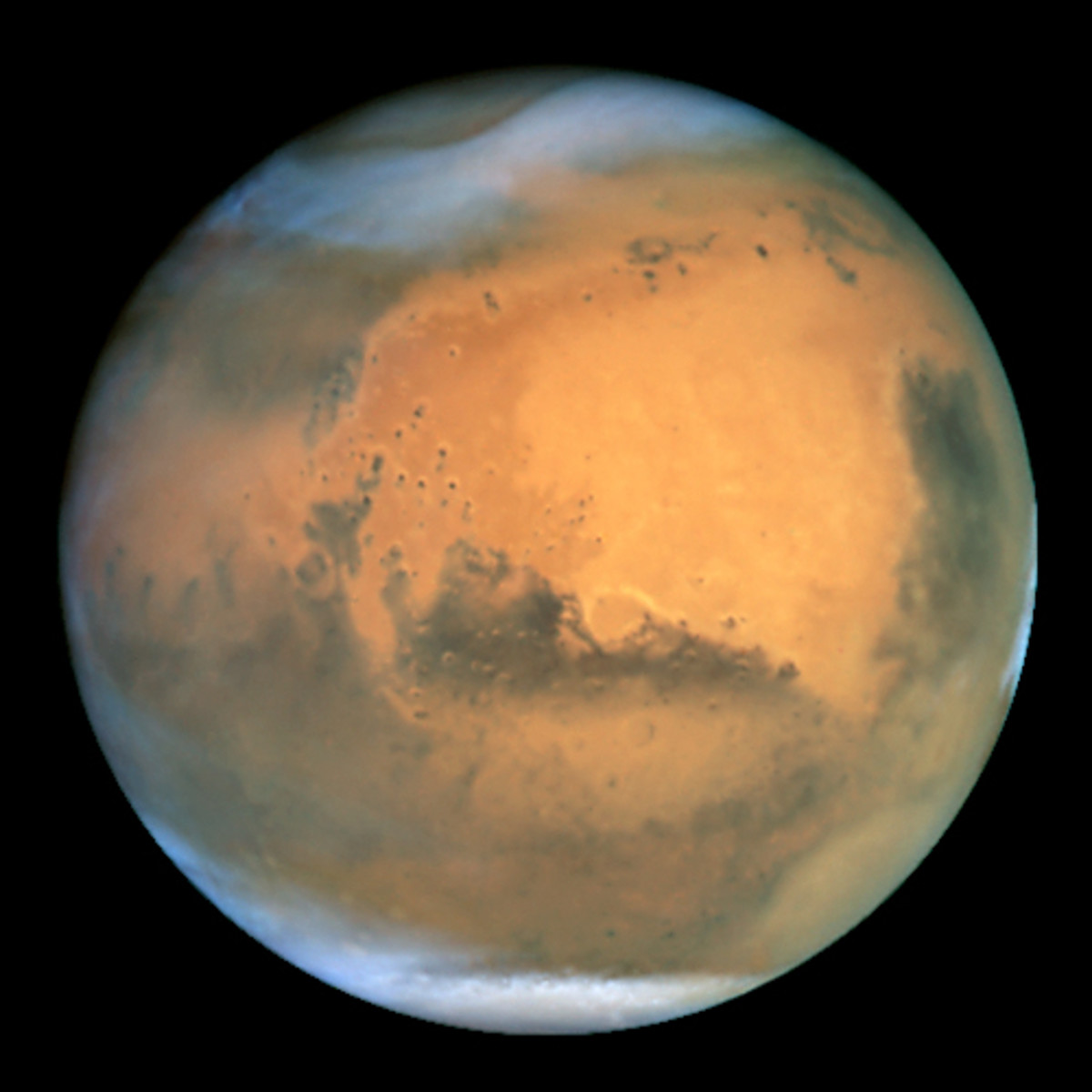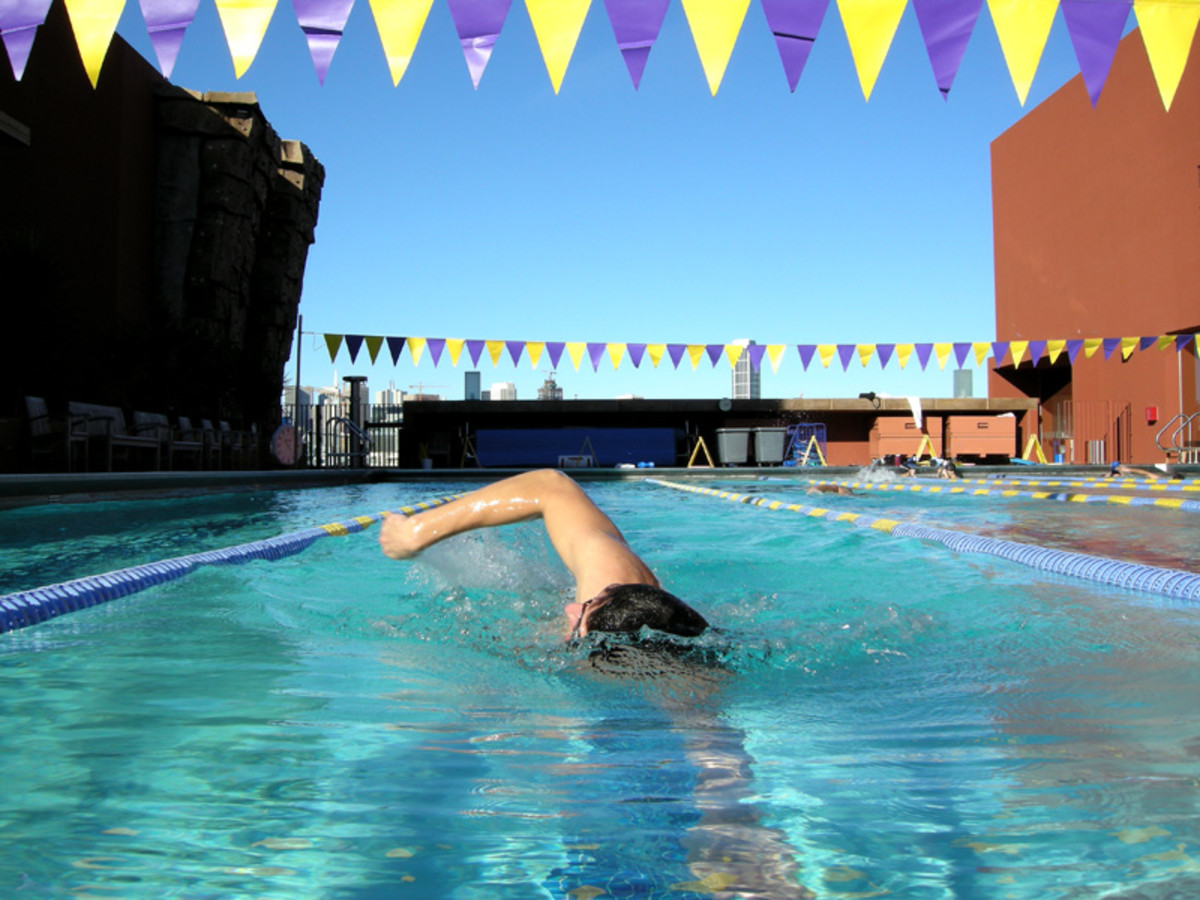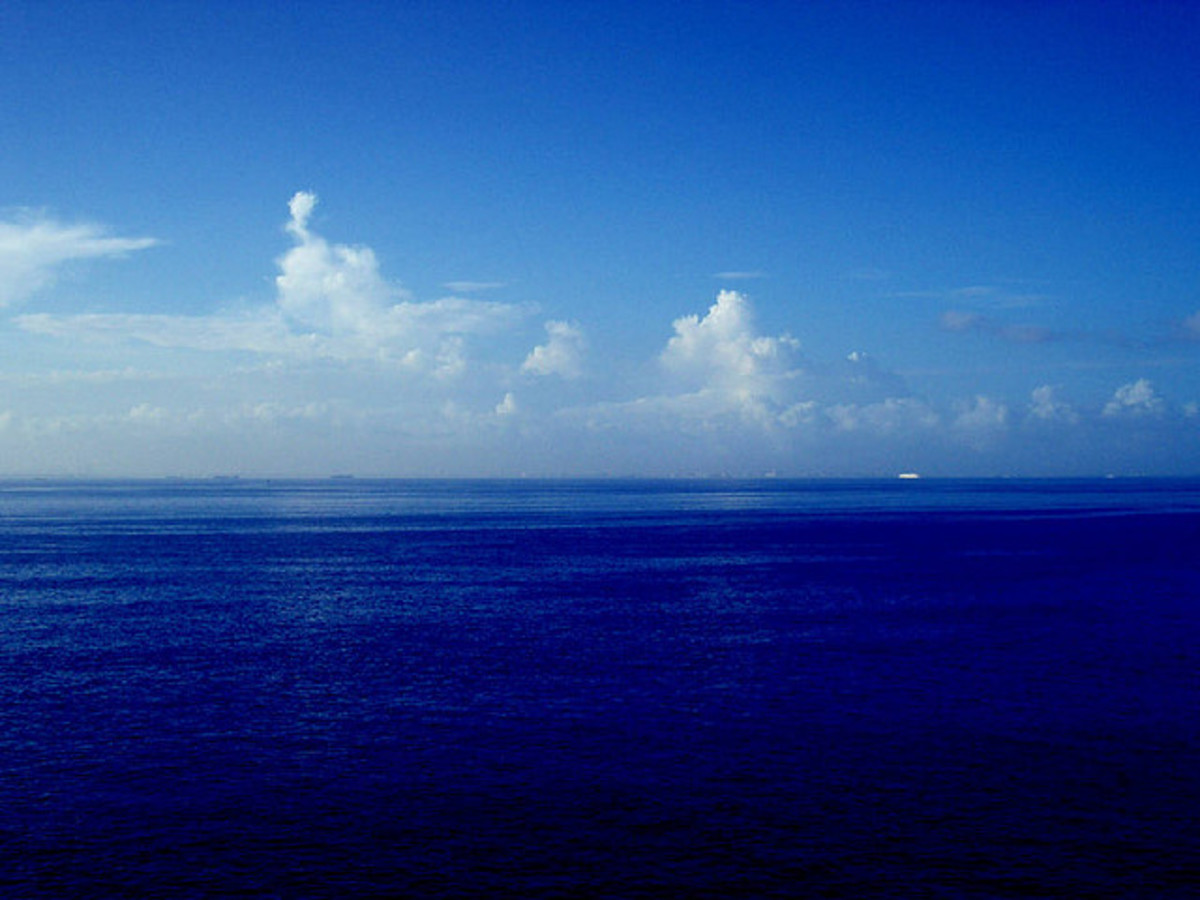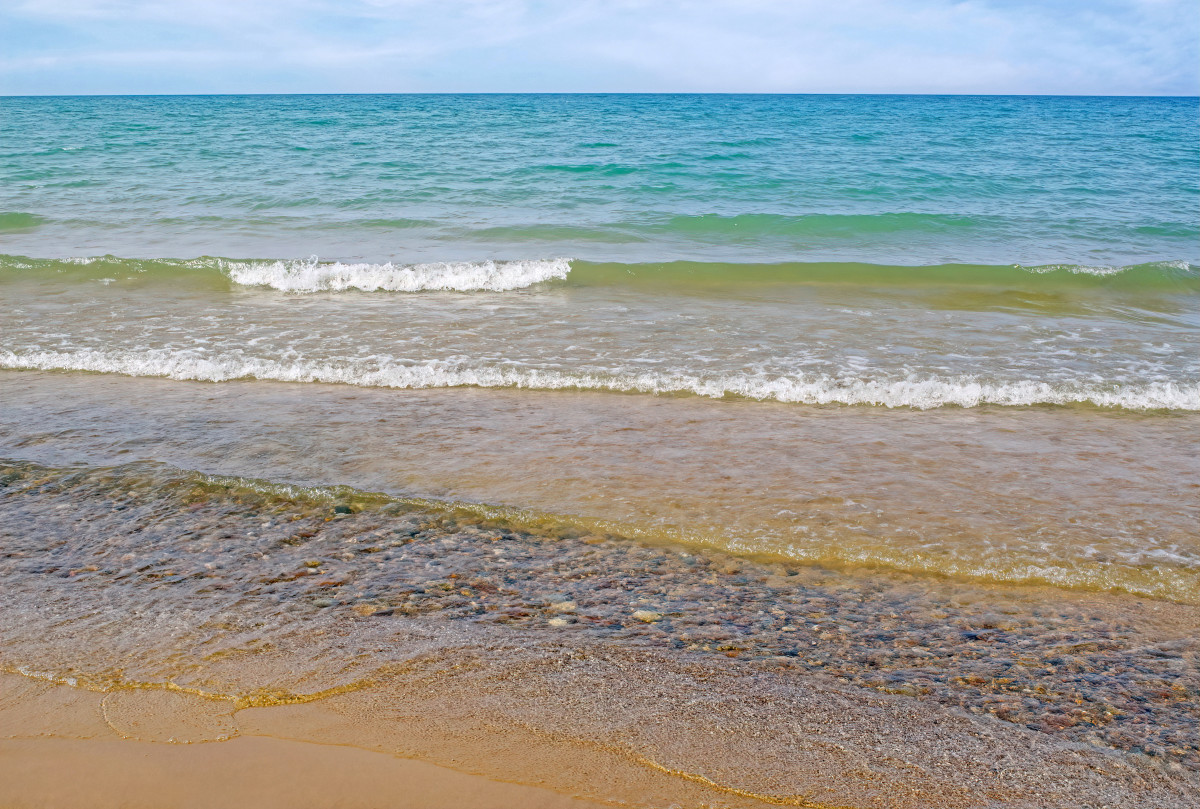About the oceans and the cause of surface waves. Coriolis deflection
Have you thought about the interaction between the air and the oceans that creates the waves? Have you thought about why the water masses beneath the surface in the oceans move in another direction than the wind and the surface water? Or have you ever thought about the fact that we live at the bottom of an ocean of air?
Maybe you have, but most of us just take it for granted, we expect that the wind is blowing and that in turn creates waves at the sea. Simple as that! But it wouldn't be much of an article if that was all there was to it, would it!
There are a lot more going on between the air and the oceans and under the sea surface and it is very exciting when you start to think about it! The fascinating part with Earth science is that every little detail has to work together to form the many events that we take for granted. And the waves aren’t an exception to that rule. Nothing just happens by it self; it is a long chain of events that leads to the resulting event that we can observe. You will need a bit of imagination and the ability to transfer your imaginations into a larger scale to get the picture of what really happens beneath the surface of the oceans. It is a bit complicated, but we take it step by step and focus only on the big parts!
Lets start with the wind-driven surface circulation we all know about:
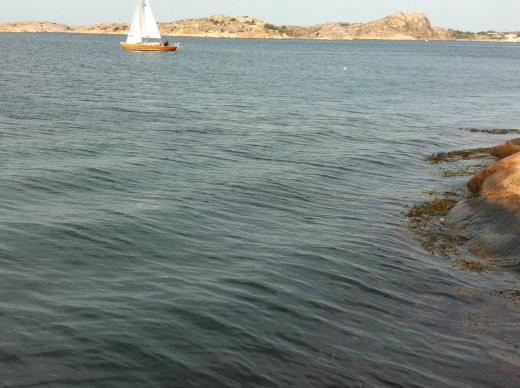
Wind drag
The wind which we are familiar with, is in fact moving air, or moving air molecules. We need to think about it as molecules in order to understand why the water is moving since it is in fact the air molecules that move the surface water in the oceans. The movement occur when air molecules are dragged across the sea surface and collide with water molecules. In the collision the energy in the air molecules are being transferred to the water molecules and sets them in motion. After a while this process creates waves and also generates currents. But this transfer of energy is an inefficient process and only 3 to 4 percent of the speed from the generated wind will be transferred to the water surface.
Listen to the sounds of ocean waves while you read on!
Some interesting facts
The wind-driven surface currents affect only about 10 percent of the ocean´s volume.
So there must be something else that makes the ocean waves to move and to move in another direction!
Imagine a wind that blows parallel to the shore. Then we would expect that the water beneath the surface would followed the same direction, wouldn’t we? But it doesn’t!
In fact the near-surface water moves offshore and that is due to the Ekman transport. I will come back to this but first we need to know a little about the Ekman transport and the Ekman spiral.
The Ekman spiral or the Ekman effect
Imagine the surface waves, created by the wind blowing over the ocean surface, and then try to imagine the water close beneath the surface. The surface waves in turn create a friction on the water molecules immediately beneath them and sets them in motion as well. In this way the energy is transferred from the surface and deeper into the water column. But for this to happen the wind needs to blow for a long time and also persistent. No matter how much the wind blows in the air the speed of this wind-driven current will diminish with depth because of the increased distance between the water masses and the wind. And then there is the fact that the water current underneath the surface flows in another direction than the surface current. Why is that? It is because of the coriolis deflection and the pressure gradient!
We start with the pressure gradient.
Some interesting facts:
The sea surface isn't flat even when it is undisturbed of waves! With sea surface I mean the surface of the ocean in a bigger scale than what we can see near us. The sea surface has a topography that consists of both mounds and depressions and if you could walk on the surface you would walk both up and down small hills on the scale of one meter!
The pressure gradient
A pressure gradient can be described as the difference between low and high levels at a given distance. We mostly hear about it in connection with air and air pressure where wind blows from high-pressure areas to low-pressure areas. Bigger differences in pressure at a given distance will result in steeper gradient. And it is the same in the oceans.
What creates these moulds and depressions in the oceans can easy be described with water poured from a glass. Imagine that you pour water from a glass into an area. If you pour only the amount in the glass the water will end up like a flat surface on the area due to gravity. But if you imagine that the glass had an infinite volume and we continue to pour water into the same area then the water will create a mould beneath the glass. Since the water is constantly poured the mould will remain even though water is spreading out from the mould. And so is the pressure gradient. If you take this picture of a mould under a glass and transform it to an ocean where the mould is due to wind driven currents, density- driven under-water currents, big streams, continents as well as fresh water from big rivers etc. you get the picture of a sea surface that is all but flat! These moulds and the pressure gradient will cause water to flow constantly outward in a radial pattern.
The coriolis deflection!
Now imagine the pressure gradient again in the oceans and think about the water pouring down in the direction of the gradient. If an observer from space looked upon an Earth that were still and not moving, the water would seem to flow straight and down in the same direction as the gradient. But our Earth is constantly rotating and therefore water currents will look like they deflect due to the Coriolis effect.
The Coriolis deflection is the appeared deflection of an object, moving relative a rotating Earth. The Coriolis deflection was discovered by the French engineer and mathematician Gaspard Gustave de Coriolis who lived between 1792 -1843.
This can be a bit difficult to understand but lets give it a try since it is very important in order to understand large-scale movements in the atmosphere and in the oceans!
There are many different ways to explain the Coriolis deflection and if you search the Internet you will find explanations and videos of merry-go rounds and the explanation of water rotating in a draining sink. Personally I think that the merry-go-round can be one way of visualise the effect but I prefer to look at a rotating Earth instead since that is what it is all about. It is always better to start with the real picture. And water in a draining sink has nothing to do with Coriolis deflection, which only can be seen in much bigger scales as the oceans or the atmosphere.
So, lets try our visualisation even more when we look at the Earth from space!
The rotating planet Earth
If you start thinking about Earth rotating around its axis completing a full rotation in 24 hours and remember that the planet Earth is rotating to the east.
The rotational speed!
Because of Earth’s spherical form the area at the equator will make a longer journey during a day than areas in middle or higher latitudes, and the poles are only rotating pretty much standing still. So areas in the equatorial area travel much faster than areas at the poles since the time for the Earths rotation is the same: 24 hours.
Try to keep that picture in your head as we continue!
Add a moving object while Earth is turning underneath it!
And now you have to imagine a moving object like an airplane travelling from somewhere in the Northern Hemisphere going south towards the equator. If you could observe the plane from space it would look like the plane is deflecting to the right. This is because the Earth is moving underneath it towards the east at a higher speed at the equator. If a plane were moving from the equator towards north in the Northern Hemisphere it would also look like it turned to the right if you observed it from space since it flies over land that is rotating at a slower and ever decreasing rate compared to the airplane. It is important to notice that weather an object is moving north or south in the Northern Hemisphere it appears to turn to the right. And it is the same if the plane fly east or west in the Northern Hemisphere: it will look like the plane is deflecting to the right of the intended course. In the southern hemisphere it is the opposite: a moving object in the southern hemisphere will appear to deflect to the left. The coriolis deflection takes this into consideration. The best way to explain this effect is to visualise it. Start with watching the video below.
Some interesting facts:
The Ekman spiral may extend downward to a depth between 100 to 200 meters at a depth where wind- induced effects are negligible. This is under the influence of a strong and persistent wind.
So now we know that:
- Moving objects in the northern hemisphere appears to deflect to the right and moving objects in the southern hemisphere appears to deflect to the left.
- The Coriolis effect increases with latitude and that the effect is zero at the equator
- The Coriolis effect is speed-dependent; faster objects experience greater deflection.
- The Coriolis effect is an important factor in large-scale movements in the atmosphere, the oceans and phenomena like hurricanes.
So now we can go back to the Ekman spiral or the Ekman effect and see some of the events going on beneath the surface waves!
![Ekman spiral By Original: Timer. Vectorized version: Chabacano [Public domain], via Wikimedia Commons Ekman spiral By Original: Timer. Vectorized version: Chabacano [Public domain], via Wikimedia Commons](https://usercontent2.hubstatic.com/5579549_f520.jpg)
Now we can imagine the surface waves again, moving because of the frictional drag on the water molecules from the wind molecules. And now we know why the water under the surface moves in another direction than the surface waves. This deviation results from the Coriolis deflection making the deeper layer to move to the right of the flow direction of the layer above it. As the current deepens each successively deeper water layer is deflected to the right of the layer immediately above it. If you could look at such a water column it would look like a spiralling current where the speed of the current decreases with distance below the water surface.
This spiralling flow pattern is called the Ekman transport. The one who first explained this was a Scandinavian physicist; V Walfrid Ekman. In 1902 Ekman showed why water movement at the surface must deviate from the direction of the generating winds. He also explained why and how each deeper layer moved at a lower speed and in a different direction than the layer above.
Explanation to the photo:
Ekman spiral
- Wind
- Force from above
- Effective direction of the current flow
- Coriolis effect
Ekman transport
This bulk movement of water masses is called the Ekman transport that is 90 degrees to the right of the wind in the Northern hemisphere and to the left in the southern hemisphere. This is why the water masses beneath the surface move in another direction than the wind and the surface water. Ekman transport is also the explanation to the coastal upwelling that is so important for providing nutrients in some of the largest fishing areas on Earth.
So now you know the answers to all the questions in the beginning of this article! And I hope you will look upon ordinary waves in a new way from now on!

